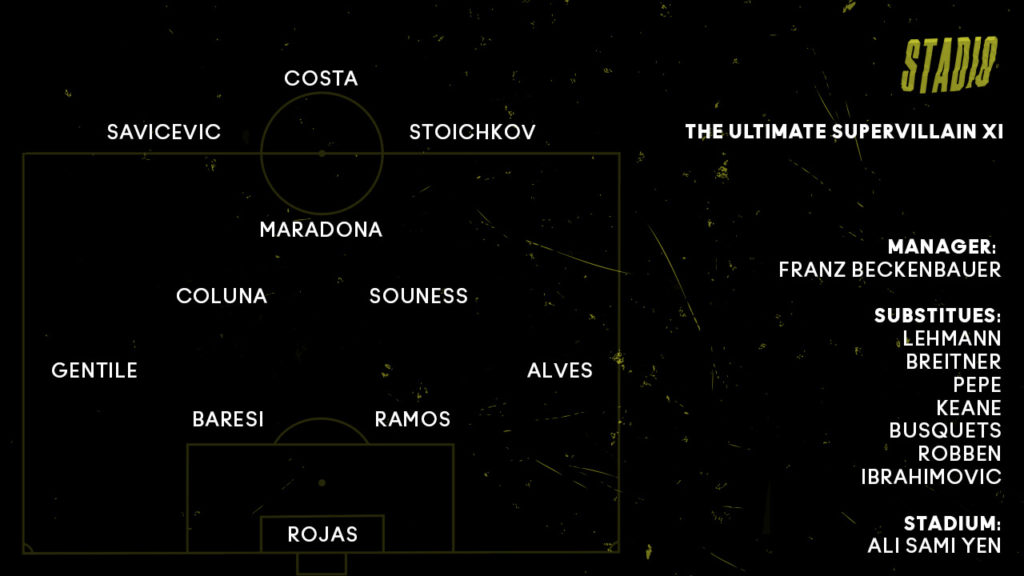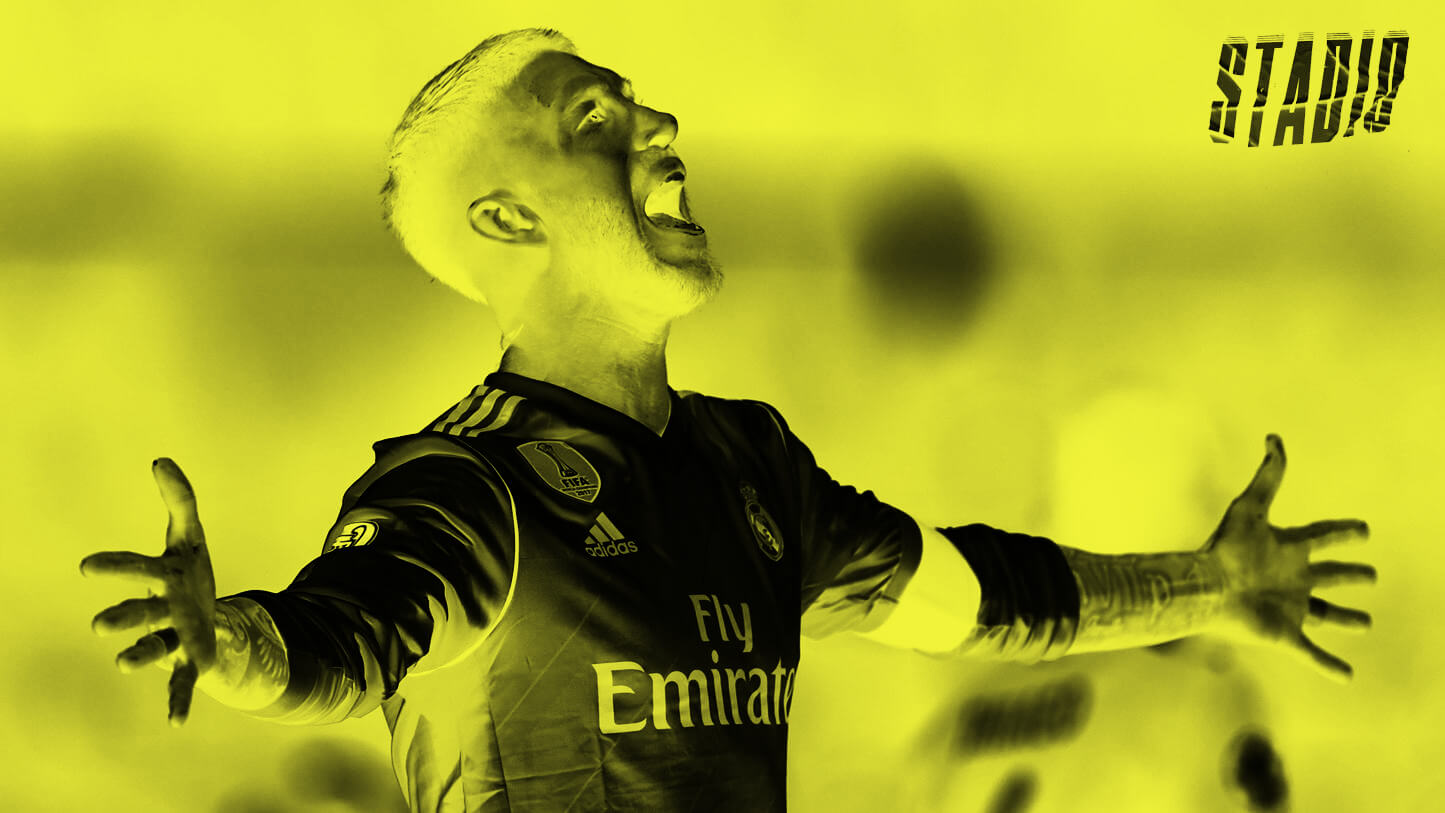What makes a footballing supervillain? After assembling an Ultimate Supervillain XI, Stadio founders, Musa Okwonga and Ryan Hunn take us through their selection process.
Deep down, everyone loves a villain. We saw this in response to Thursday’s Stadio episode, where we picked a starting XI, together with substitutes, a manager and a home ground, of some of the devilishly cunning footballers of all-time. Many responses questioned the omission of certain heroes. “Where’s Cantona?” asked one, incredulously. “I can’t believe you didn’t pick Chiellini!” lamented another.
However, it’s important to stress what we’re dealing with here. This isn’t low-level petty thievery, this isn’t casual nastiness, nor is it even simple villainy. Merely being known as one of football’s most notorious hard men doesn’t warrant a place in such a squad. Nor does the consistent display of varying levels of shithousery. There can be elements of both, for sure, but this team not only demands but deserves a better class of criminal.
Supervillains operate on another level to the everyday rogue, and not always in the same way. Take, for example, our preferred centre-back pairing. If this were a movie, the police would have had a tail on Sergio Ramos for months, before finding out that Franco Baresi – fronting as a well-respected local businessman and philanthropist – was actually overseeing the whole criminal operation. Dani Alves at right-back may raise a few eyebrows, but every crew of villains needs someone who’s good for morale. Someone to draw the opposition into a false sense of security – “hey, this guy’s ok, y’know,” before turning to see he was the one who was running away with all your cash, laughing as he did so.
If you thought the defence was enough to worry about, think again. Graeme Souness wanted to see everything burn – maybe even himself at times – but would only prefer that it be done to a soundtrack of Debussy’s Clair de Lune. Then there’s Diego Maradona, a genius who fed off the devastation his artistry would inflict upon opposition players, and quite often his own teammates. Deep down you get the impression that Maradona actually wanted to be the hero, but ultimately got a thirst for villainy, then supervillainy, that he would never be able to quench.
Breaking through two lines of the world’s most notorious supervillains might be easier if the front line wasn’t arguably the most villainous of all. On one flank lurks Dejan Savićević, a man so good at what he did that the best would always hire him, whilst probably despising him. On the other waits Hristo Stoichkov, a man who Johan Cruyff was convinced had been ‘nurtured with an evil milk’. Stoichkov was a curious player, built like a buffalo – and containing the temper of one – but who also possessed jaw-dropping technical wizardry, like a guitarist playing the most unbelievable solos whilst their fingers bled.
And who, you might ask, did we choose as the centre forward of this accursed selection? Well, it’s safe to say, there was only one choice for who should lead the line…

